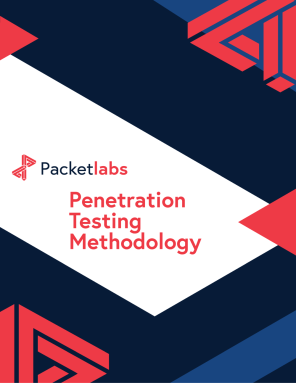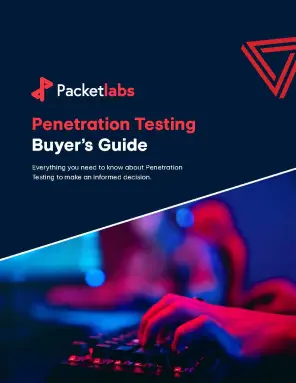Threats
Top Cybersecurity Threats in 2025 (So Far)
Would you like to learn more?
Download our Guide to Penetration Testing to learn everything you need to know to successfully plan, scope and execute your penetration testing projects
Global events are heating up significantly in 2025 and organizations face a diverse set of security challenges looking forward into the quarter-century mark. Proactive security measures need to evolve in order to meet the newest threats and safeguard business operations, privacy, and individual's health and safety. Cyber military campaigns, targeted violent extremism, extreme weather events, sextortion scams, espionage, and insider attacks, are just a few of the threats emerging over the past few years. The risks are more diverse and consequences higher than ever.
In this article, we highlight the top cybersecurity threats in 2025 (so far), their implications for IT and business operations, and outline practical strategies to mitigate them. Our goal is to help organizations remain aware of the big picture and increase their resilience and preparedness in a risk landscape fraught with uncertainty.
Top Cybersecurity Threats in 2025 (So Far)
The year 2025 presents a host of edge security challenges that demand immediate attention from organizations and individuals alike. Let's delve into some of the most critical cases, examining their implications and offering strategies to mitigate the risks they pose.
Extreme Weather Events
Most experts believe that climate change is causing more frequent and severe extreme weather events, and they are forecasted to increase. These extreme events can inflict significant damage on communities, businesses, and government organizations. In early 2025, fires extensively ravaged many areas of Los Angeles. In 2024, 27 individual climate disasters had at least $1 billion in damages. Hurricane Helene, resulted in 219 deaths and cost $79.6 billion in damages, disrupted critical infrastructurem and displaced thousands.
Prolonged outages from extreme weather can also jeopardize customer trust and create long-term reputational harm if recovery measures. The lack of physical security on-premesis can also present serious digital risk; potentially allowing direct physical access to sensitive information and computer systems.
Mitigating the Extreme Weather Events
Assess your likelihood of experiencing extreme weather based on geographical location and historical data.
Determine whether hot, cold, or warm sites are appropriate for your organization and under what circumstances they should be utilized.
Conduct tabletop exercises to prepare for recovery from various scenarios of outages caused by extreme weather events.
Assign roles and establish decision-making policies to manage responses effectively when facing extreme weather events.
Develop communication plans to coordinate between management, stakeholders, and staff during potential extreme weather events.
Educate personnel on where to obtain reliable information about weather updates, safety instructions, and emergency resources.
Regularly review and update contingency plans to address evolving weather-related risks.
Targeted and Situational Violence
In 2024, the world looked on in shock and disbelief when a U.S. presidential candidate narrowly escaped an assassination attempt. The politically motivated killing of United Healthcare CEO Brian Thompson made headlines across America and the world. However, the risk of violence permeates all levels of many organizations. Unchecked retail theft and mental health issues in many communities can pose an immediate threat to public-facing workers.
CISA observed a significant increase in bomb threats in 2023 and they remain a critical concern for public and private organizations in 2025. In 2024, the Cybersecurity and Infrastructure Security Agency (CISA) released updated advisories providing guidelines on how to respond to bomb threats effectively including a checklist and guide. These advisories emphasized the importance of rapid assessment, communication, and collaboration with law enforcement to mitigate potential risks.
For large organizations exposed to political activism or contentious industries, strengthening security measures to protect executives and management is essential. These measures must address physical threats and mitigate risks posed by fear-inducing tactics, emerging technologies, and social engineering schemes designed to harm or intimidate.
Mitigating the Risk of Violence
Implement Dark Web Monitoring to identify potential threats or active plots against your organization or its executives.
Enhance physical security measures, including deploying security guards, restricting physical access, and installing comprehensive surveillance systems.
Reduce public exposure, limiting executive appearances and public events to only those that are absolutely necessary.
Educate personnel on recognizing and reporting personal threats, whether delivered through physical means, online platforms, or other channels.
Set policies for personnel handling threatening individuals, including guidance on maintaining safety, de-escalation techniques, and clear instructions for reporting and escalating incidents.
Mitigating the Risk of Bomb Threats
Create a comprehensive response plan that includes evacuation procedures, communication protocols, and coordination with emergency services, and conduct drills simulating bomb threat scenarios to test and refine the organization’s response plan
Train employees on identifying suspicious packages and recognizing and responding to bomb threats, including understanding evacuation routes and how to report suspicious activities.
Implement security measures such as controlled access points, surveillance systems, and regular security patrols to detect and deter potential threats.
Build relationships with local law enforcement and emergency services to ensure swift response and effective threat management.
Sexpionage and Sextortion
Sexpionage (using sexual-based social engineering for spying) has a long history dating back to ancient Rome where courtesans were often rumored to influence politicians and military leaders. Mata Hari, was a Dutch exotic dancer accused of seducing military officers and extracting secrets for Germany during World War I. During the Cold War, the Russian KGB and Stasi used sexpionage as a military strategy.
Fast forward to 2025; "Pig Butchering" - a sophisticated scam where cybercriminals build trust with victims over time before defrauding them - uses generative AI chatbots via SMS text messages to lure victims. Typically involving romance scams or investment fraud, these schemes are increasingly prevalent on social media and dating platforms, making Big Butchering a significant cybersecurity concern.
Online sextortion has also increased in recent years, is blackmail where perpetrators threaten to publicly post sensitive material unless victims comply with their demands. Attackers often use fake accounts and social engineering tactics to gain trust, coercing individuals into sharing compromising content.
Online dating sites also pose a threat for delivering malware laden documents. This malware may offer an attacker a foothold on the victim's device and serve as a vector stealing credentials and gaining remote access to valuable assets.
Mitigating the Risk of Sextortion
Awareness training for personnel about the risks associated with meeting people online and signs that a scam may be underway.
Setting strict acceptable use policies for users and segmenting work activities from personal activities on work-enabled devices.
Avoiding a COPE device policy, which allows personal and work activities on the same device, to reduce the risk of compromise.
Economic Sanctions
The United States has been intensifying sanctions against Chinese technology companies, expanding the list of already sanctioned firms such as Huawei, TikTok. Notably, in January 2025, the U.S. The Department of Defense added Tencent Holdings and battery maker CATL to a list of companies allegedly supporting China's military. Other reports say that TP-Link, a major IT router vendor is also being considered for security sanctions.
These sanctions have significant implications for global supply chains, particularly in the technology sector. Businesses that rely on hardware and software from these companies may face disruptions, affecting operations and growth. The evolving political landscape suggests that further sanctions could be imposed, exacerbating these challenges.
Mitigating the Risk of Economic Sanctions
Regularly update your organization's inventory of hardware and software, including a Software Bill of Materials (SBOM), to identify dependencies on potentially sanctioned entities.
Source components and software from multiple suppliers across different regions to reduce reliance on any single entity or country, thereby minimizing the impact of sanctions.
Invest in advanced compliance and risk management systems to stay informed about changing regulations and ensure adherence to international laws.
Perform comprehensive due diligence on all suppliers and partners to ensure they are not subject to sanctions, thereby avoiding potential legal and operational risks.
Establish robust contingency plans to address potential supply chain disruptions, including identifying alternative suppliers and developing strategies for rapid response to changing regulatory environments.
Unmapped Attack Surfaces
The attack surface is the number of all possible points, or attack vectors, where an unauthorized user can access a system and extract data. The smaller the attack surface, the easier it is to protect.
Organizations must constantly monitor their attack surface to identify and block potential threats as quickly as possible. They must also try to minimize the attack surface area to reduce the risk of cyberattacks succeeding. However, doing so becomes difficult as organizations expand their digital footprint and embrace new technologies.
Significant examples of attack surfaces are already being exploited in 2025. As part of a global cybersecurity breach for example, PowerSchool customers across Canada and the United States were alerted that personal information was stolen. Schools use PowerSchool to track enrollment, attendance, and grades.
"While the full impact is not yet clear, there is no indication the PowerSchool system in any other center for education has been affected," a release read.
Personal information contained within PowerSchool includes birthdates, addresses, allergies, MSI cards, emergency contact information, and whether a student has an adaptation.
Mitigating the Risks of Unmapped Attack Surfaces
Leverage Attack Surface Penetration Testing to fine-tune your organization's existing cybersecurity techniques, alerts, and responses to maximize the protection of your attack surfaces (and enhance the efficacy of future cybersecurity roadmaps for your organization.)
Identify vulnerabilities across search engines, historical website records, exposed endpoints, public code repositories, employee Internet activity, mail misconfigurations, and more via Packetlabs' partnership with Flare.io
Conclusion
While security edge cases are less likely, being prepared is key to preventing and mitigating potential losses. In 2025, organizations face an increasingly complex array of edge security threats, from extreme weather events and bomb threats to sextortion, assassination, and economic sanctions. These risks demand proactive strategies to ensure operational resilience and safeguard individuals.
Businesses can better mitigate these challenges by leveraging advanced security measures, enhancing employee awareness, diversifying supply chains, and collaborating with authorities.
Let's Connect
Share your details, and a member of our team will be in touch soon.
Interested in Pentesting?

Penetration Testing Methodology
Our Penetration Security Testing methodology is derived from the SANS Pentest Methodology, the MITRE ATT&CK framework, and the NIST SP800-115 to uncover security gaps.
Download Methodology
Penetration Testing Buyer's Guide
Download our buyer’s guide to learn everything you need to know to successfully plan, scope and execute your penetration testing projects.
Download GuideExplore in-depth resources from our ethical hackers to assist you and your team’s cyber-related decisions.

September 13 - Blog
Why Multi-Factor Authentication is Not Enough
Knowing is half the battle, and the use and abuse of common frameworks shed insight into what defenders need to do to build defense in depth.

November 19 - Blog
The Top Cybersecurity Statistics for 2024
The top cybersecurity statistics for 2024 can help inform your organization's security strategies for 2025 and beyond. Learn more today.

October 24 - Blog
Packetlabs at SecTor 2024
Packetlabs is thrilled to have been a part of SecTor 2024. Learn more about our top takeaway's from this year's Black Hat event.

- Toronto | HQ
- 401 Bay Street, Suite 1600
- Toronto, Ontario, Canada
- M5H 2Y4
- San Francisco | HQ
- 580 California Street, 12th floor
- San Francisco, CA, USA
- 94104
© 2024 Packetlabs. All rights reserved.






